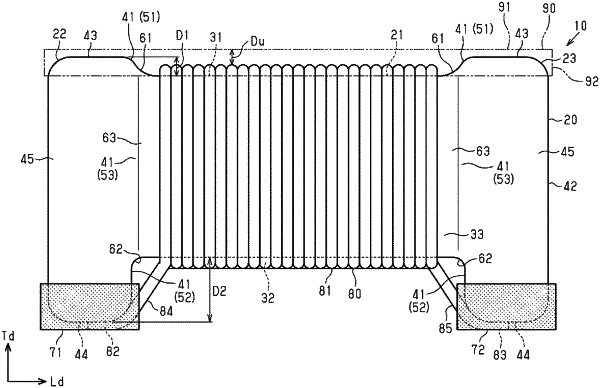| CPC H01F 27/2823 (2013.01) [H01F 17/045 (2013.01); H01F 27/24 (2013.01); H01F 27/29 (2013.01); H01F 27/292 (2013.01)] | 22 Claims |

|
1. A wire-wound inductor component comprising:
a core having a columnar shaft portion, and a first support portion and a second support portion that are respectively provided on a first end portion and a second end portion of the shaft portion;
a first terminal electrode and a second terminal electrode provided on the first support portion and the second support portion, respectively;
a wire wound around the shaft portion, and having a first end connected to the first terminal electrode and a second end connected to the second terminal electrode; and
a cover member disposed between at least the first support portion and the second support portion, and covering an upper surface of the shaft portion,
wherein a distance between an upper surface of the shaft portion and a top surface of the first support portion and the second support portion in a height direction of the core is defined as a top surface step,
a distance between a lower surface of the shaft portion and a bottom surface of the first support portion and the second support portion in a height direction of the core is defined as a bottom surface step,
the top surface step is smaller than the bottom surface step,
the top surface step is larger than a wire diameter of the wire, and
a distance between an upper surface of the shaft portion and an uppermost surface of the wire is larger than half of the top surface step.
|